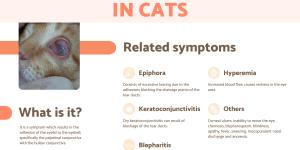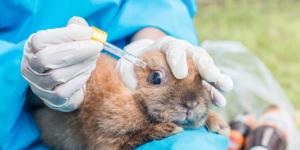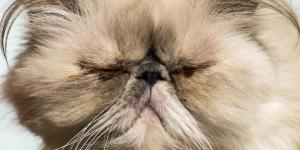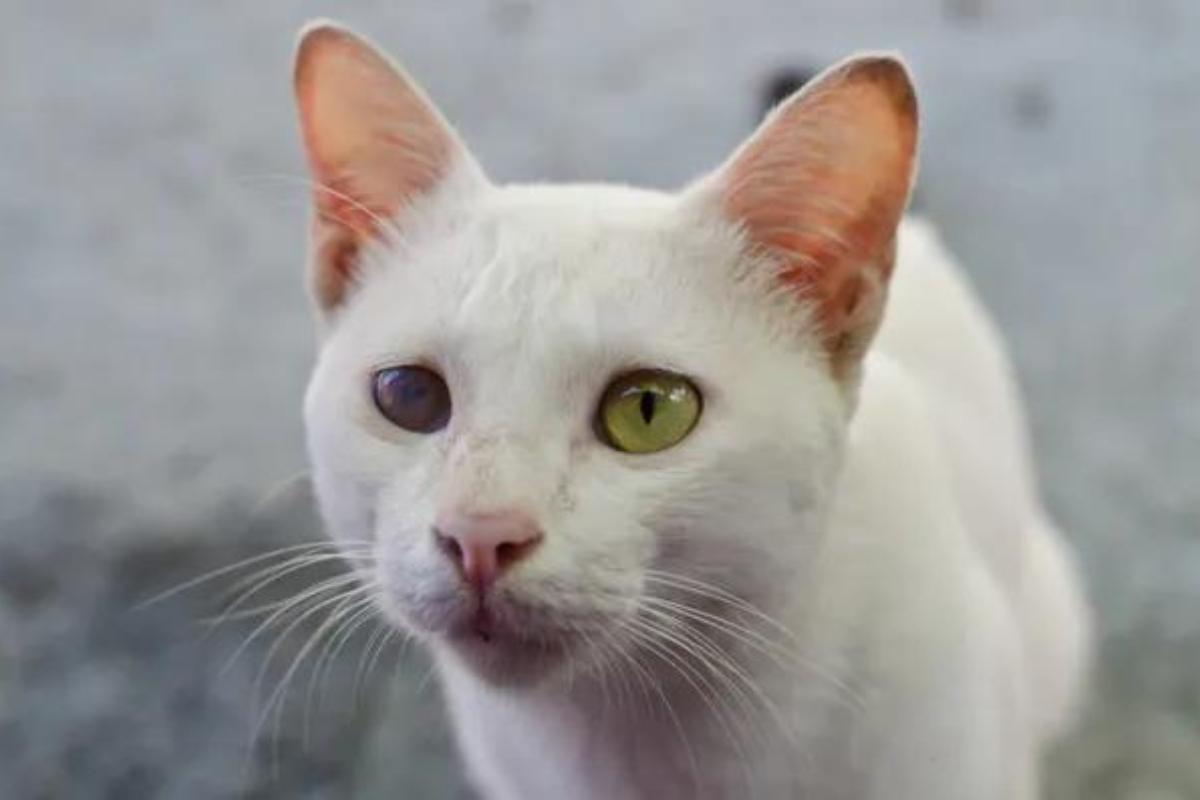Anisocoria in Cats - Symptoms, Causes and Treatments



See files for Cats
The pupil is the black part of the eye in the center of the iris where light enters the eyeball. When the eye receives light, the pupil contracts, while it dilates when light is dim or absent. Although the name may not sound familiar, anisocoria in cats is a very typical eye condition in which the pupils of the cat's eyes vary in size. Unequal pupil size is a symptom of an underlying disorder, and treatment is based on diagnosis.
In the following AnimalWised article, you will learn everything you need to know about anisocoria in cats, its causes and its treatment.
What is anisocoria in cats?
As mentioned earlier, the pupils are the black part of the eye, located in the center of the iris. Anisocoria is a condition in which the pupils of the cat's eyes are of different sizes. The affected pupil may be larger or smaller than the normal pupil.
Anisocoria in cats can occur in two ways:
- Dynamic anisocoria: when the stimulated pupil contracts more than the other unstimulated pupil after stimulation by a direct light source, which is normal in cats without problems.
- Static anisocoria: when there is a difference in pupil size even though both pupils receive the same illumination, this type of anisocoria is completely abnormal.

Symptoms of anisocoria in cats
The most common symptom of anisocoria in cats is the difference in the size or diameter of a cat's pupils in the same lighting conditions. However, depending on the underlying cause, the eye with anisocoria may suffer from other structural changes, and the cat may also behave differently.
These are the other common symptoms associated with anisocoria:
- The white part of the affected eye is red.
- The cornea (the outer surface of the eye) is cloudy or bluish in color.
- There is discharge from the eye.
- The eyelid of the affected eye is drooping.
- The cat blinks or rubs its eye.
- The cat is less active than usual.
- Changes in the cat's vision.
If your cat has reddened eyes, there may be several causes. In most cases, they do not require any treatment and are not serious, although there are some exceptions. Continue reading this other article if you want to learn what can cause red eyes in cats.
Causes of anisocoria in cats
The causes of anisocoria are many, it is a symptom and alone reason enough for an urgent visit to a veterinarian, especially if it occurs suddenly. Although anisocoria in cats can occur as a result of a disorder in the physiological system of the animal, it is usually caused by a disease. The most common are the following:
- Horner's syndrome: consists of a set of symptoms due to a disease or problem resulting from a lack of sympathetic irrigation. It is manifested by sunken eyes, a mydriasis and a miosis, as well as other symptoms such as a prolapse of the third eyelid or a difference in the size of the eyes. Continue reading this other article if you want to learn more about Horner's syndrome.
- Corneal Lesions: Damage to the superficial layer of the eye can lead to ulcers, and thus a difference in pupil size due to changes in the affected eye.
- Glaucoma: The increase in intraocular pressure, also known as glaucoma, causes the affected eye to be slightly more dilated, resulting in one of your cat's pupils being larger than the other.
- Feline Leukemia: the retrovirus of feline leukemia can cause various symptoms and blood disorders in affected cats. Clinical signs that may occur include differences in pupil diameter, as well as other symptoms such as anemia, oral disorders or gingivitis, fever, lethargy, weight loss, or infection. Continue reading this other article if you want to learn more about feline leukemia.
Other causes of anisochoric pupils in cats are:
- Trauma
- Uveitis
- Eye tumors
- Degenerations of the iris
Uveitis in cats is an ophthalmologic disease that can affect the choroid of cats of any age. However, it is more common in stray cats. Continue reading this other article if you want to learn more about feline uveitis in cats.

Diagnosis of anisocoria in cats
Diagnosing anisocoria in your cat is easy because you can see it with the naked eye. However, finding the cause of this symptom in order to treat it is more challenging.
So, if you notice that one of your cat's pupils is larger than the other, you should not hesitate to visit your trusted veterinarian. It is time to fully examine the cat and perform complementary tests to find the cause of your cat's anisocoria.
The diagnostic protocol should always begin with a thorough physical examination of the patient, including a detailed examination of the ocular structures and a complete neurologic examination.
A proper eye examination should always include a Schirmer test, a fluorescein test to detect corneal ulcers and lesions, measurement of intraocular pressure in both eyes, and observation of the fundus.
If the eye does not have changes that warrant anisocoria, complementary tests should be performed, such as:
- Complete blood count and biochemical studies.
- Radiographs
- Testing for feline leukemia and immunodeficiency.
In cases where neurologic examination or symptoms suggest central lesions, we may resort to more advanced imaging tests such as CT or MRI.
Treatment of anisocoria in cats
Treatment of anisocoria depends entirely on the underlying cause of the condition, and specific treatment is tailored specifically to the diagnosis. Therefore, an accurate and rapid diagnosis is critical to the cat's speedy recovery. Anisocoria itself is less important than treating the underlying disease that may cause it.
Some medications can cause problems with the pupils. If your veterinarian finds that a medication your cat is taking is causing the difference in pupil size, you must stop giving it to your cat. Anisocoria will be cured when the medication is gone from the cat's body.
You should expect that there is no treatment for some disorders. Some of the underlying disorders that cause anisocoria are not life-threatening. For this reason, they do not require treatment, such is the case of iris hypoplasia or atrophy.
Your veterinarian will discuss treatment options that are appropriate for your cat's individual circumstances.
If you want to learn more about hypoplasia in cats, do not miss the following article where we talk about the causes, symptoms, and treatment.

Prognosis of anisocoria in cats
Both treatment and prognosis depend entirely on the underlying cause of anisocoria. In most cases, if you treat the underlying condition, your cat's pupils will return to their normal size. In some cases, your cat may need long-term drug treatment to address the underlying cause. If your cat is blind due to the underlying condition, it is extremely unlikely that the blindness will be reversible.
If you want to learn more about other common eye diseases in cats, do not miss the following article, where we explain all the possible reasons why your cat may have a cloudy eye.
This article is purely informative. AnimalWised does not have the authority to prescribe any veterinary treatment or create a diagnosis. We invite you to take your pet to the veterinarian if they are suffering from any condition or pain.
If you want to read similar articles to Anisocoria in Cats - Symptoms, Causes and Treatments, we recommend you visit our Eye problems category.
- J. Oliver, N. Mitchell. (2021). Manual of feline ophthalmology . Publisher Servetus.








